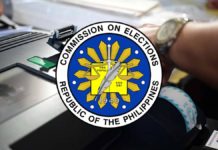ILOILO City – The Iloilo Police Provincial Office (IPPO) has warned the public about counterfeit money.
IPPO director, Police Colonel Noel Aliño, issued the warning following the announcement of the local government unit (LGU) of Oton on the alleged proliferation of fake P1,000 and P500 bills.
Oton LGU said fake bills are usually circulated in public markets, specifically in the fish and meat sections.
“I would like to warn the public sa counterfeit na pera lalo na sa mga market and sa mga bus kasi wala silang machine na mag-determine na fake or hindi,” Aliño said.
The IPPO top cop further advised the public to examine money carefully.
Those caught deliberately proliferating and using fake money will face charges for violating Article 168 of the Revised Penal Code (Illegal Possession and Use of False Treasury Bank Notes and Other Instruments of Credit) and estafa.
The public is also advised to be familiar with the following to determine fake money:
1. Color-shifting Ink – One of the first things to check if a bill is authentic is if the bill denomination on the bottom right-hand corner has color-shifting ink.
2. Watermark – The watermark is a characteristic security feature of authentic banknotes. Many of the new bills use a watermark that is actually a replica of the face on the bill. On other banknotes, it is just an oval spot.
3. Blurry Borders, Printing, or Text – An automatic red flag for counterfeit bills is noticeably blurry borders, printing, or text on the bill. Authentic bills are made using die-cut printing plates that create impressively fine lines, so they look extremely detailed.
4. Raised Printing – All authentic banknotes have raised printing, which is difficult for counterfeiters to reproduce. To detect raised printing, run your fingernail carefully down the note. You should feel some vibration on your nail from the ridges of the raised printing.
5. Security Thread with Microprinting – The security thread is a thin, imbedded strip running from top to bottom on the face of a banknote
6. Ultraviolet Glow – Counterfeit detection tools and technology use ultraviolet light because this is a clear-cut way of telling if a bill is counterfeit.
7. Red and Blue Threads – If you take a close look at an authentic banknote, you can see that there are very small red and blue threads woven into the fabric of the bill. Although counterfeit printers try to replicate this effect by printing a pattern of red and blue threads onto counterfeit bills, if you can see that this printing is merely surface level, then it is likely the bill is counterfeit.
8. Serial Number – The last thing to check on a bill is the serial number. The letter that starts a bill’s serial number corresponds to a specific year, so if the letter doesn’t match the year printed on the bill, it is counterfeit./PN





